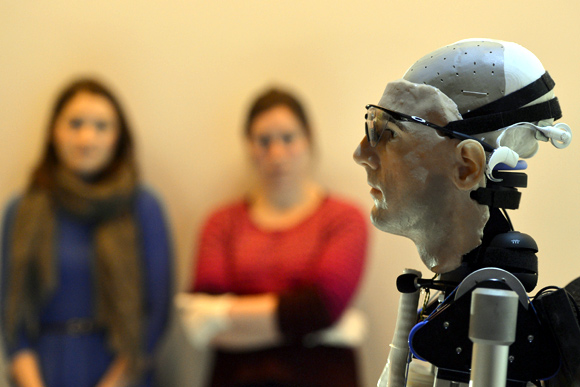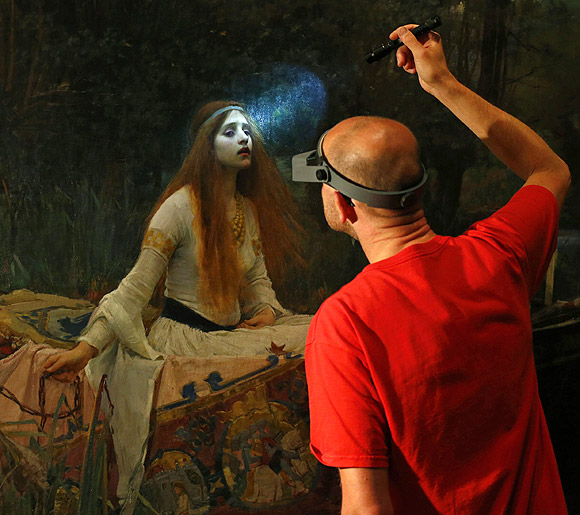 | « Back to article | Print this article |
How to pursue a fascinating career in human anthropology
The study of mankind's evolution can help you revisit the past and connect its dots to the present and future. Read on to find out how you can pursue a career in it...
If you think dark-skinned people are dusky because they live near equatorial or hot tropical regions, reflect again.
Tasmania, an island, 240 km south of Australia, far away from the equator, had natives with dark complexions.
Prior to colonial invasion, they had inhabited the island for 10,000 years, but despite the gargantuan time period, their skin colours didn't change.
At one glance, all Chinese may appear similar to you, but the fact is, a Chinese of northern China is physically and genetically different from a southern Chinese.
The former is taller, heavier with paler complexion and a pointed nose and share similarity to a Tibetan or a Nepalese, whereas Southern Chinese people look more like Vietnamese and Filipinos with their smaller and slanted eyes.
Interesting facts, aren't they?
Do biological variations of "others" baffle you?
Evolution and variation of humans intrigue you as much as cultural changes stump you?
If they do, then chuck your drab financial management course and head for an anthropology class.
Please click NEXT to continue reading...
Biological evolution, human behaviour and genetics are part of the course
So, what is Anthropology?
Anthropology is science of man. Some institutions slot it under social sciences, some under science stream.
According to Caroline B Brettell, Professor, Southern Methodist University, Dallas, “It is a study of humans -- both past and present.”
The past is studied through anthropology sub-fields of archaeology and physical (or biological) anthropology. The present is studied through its socio-cultural branch.
The genetic distance separating us from chimps is 1.6 per cent meaning, we share 98.4 per cent of our DNA with chimpanzees.
While you mull over this, also note that our larynx anatomy and altered tongue gives us fine control over spoken sounds unlike chimps, our ancestors.
Studies like these involving biological evolution and genetics constitute biological/ physical anthropology.
Socio-cultural is a different sub-field.
As a socio-cultural anthropologist, Prof Brettell researched on how Indian migrants residing in Dallas-Forth Worth, Texas are preserving and reinforcing their cultural identity, adopting American identity simultaneously.
Her study deals with contemporary changes in American society. But you may find your field in China, gathering evidence on languages of China and researching on the eight widely spoken languages as a linguistic anthropologist.
Anthropology is a wide discipline and is by nature, comparative, that integrates other subjects also.
For instance, archaeology is tied up with anthropology. Also, many zoology students tend to take up anthropology at Master’s level as curiosity to know more about humans overtakes them.
This discipline is a relatively new field that emerged during colonial era when an interest to study native human behaviour began, apprises Professor Subhadra Channa of Delhi University (DU).
Raghu Trichur, Sacramento State University, California, says, “Anthropology at its very inception started as a Western discipline of the non-Western societies.”
Various new fields are coming up in this discipline.
Whatever the field, the basic purpose remains the same: to train an individual to be more aware of the world we live in and to respect societies.
With fewer takers in India, are you game for the challenge?
A challenging study?
Students interested in the discipline can either be from humanities or science background.
Specialisation takes place at postgraduation level, after which academic-oriented students take up MPhil and PhD.
At the introductory level, students are made aware of basic concepts of all branches of the discipline such as biological, socio-cultural, archeological, linguistic anthropology, and are familiarised with Indian Anthropology.
Theories, research methodology, field studies are familiarised with.
There is also a subject on Indian Anthropology.
The link www.ugc.ac.in lists out the modules that are taught at Bachelor's level.
Almost all institutions pan–India, largely stick to UGC's curricula framework.
The discipline is taught at select Central and State Universities and affiliated colleges.
Out of 15 colleges affiliated to Ranchi University, the course is run at nine colleges, apprises PK Singh, Associate Professor, Department of Anthropology, Ranchi University.
But at 76 (out of 77) colleges of Delhi University (DU), the subject is still awaiting an introduction, just as it is, in over 150 colleges of University of Rajasthan, a NAAC-accredited A+ University.
Lack of enough colleges brings in certain complications.
Abhilasha Kapoor, who is currently pursuing her PhD from DU, rues that absence of anthropology at college-level translates into paucity of jobs.
For this prospective doctorate, getting a teaching job is a struggle because new faculty positions are hardly created.
University of Rajasthan's Associate Professor Dr Bela Kothari concurs. "We have not had any new faculty recruitment in years," says she, one of the three-staff members who are all associate professors.
"Old hands cannot bring the much needed vibrancy and new ideas," adds Dr Kothari.
Private institutes have, so far, remained indifferent to this course as it is not a money spinner.
Even overseas colleges which are making a bee-line for India don't promote it; instead they focus on hawking fast-selling MBA programmes.
"Setting up laboratories is an expensive affair," says Prof Channa.
That explains why Indian private colleges shy away from introducing the subject.
The same reasons make foreign providers wary of investing a big sum, that too in a politically uncertain environment.
It seems students are not falling head over heels for the subject. Why?
At a time when students select courses that guarantee them lucrative jobs, anthropology doesn't find much resonance.
The programme is not done for academic joy or for pure research careers.
"The interest of students is more towards engineering," Dr Kothari surmises. Not only there are drop-outs but the admissions are also dwindling.
Dr Swarup Dutta, researcher with Council for Social Development (CSD) reasons on the waning interest.
"The subject is hardly popularised or marketed for prospective students to get excited," he says.
Emerging opportunities for anthropologists
Eligibility: Science or Humanities
Programmes: BA/BSc, MA/MSc, MPhil, PhD
Selection for Bachelor’s: Aggregate 55 per cent in 10+2
Prominent Universities: Karnatak University Dharward, Hyderabad Central University, Visva Bharathi University, Vidyasagar University, Calcutta University, Utkal University- Bhubaneswar, Sambalpur University Orissa, Delhi University, Panjab University, Ranchi University, Garhwal University
Career paths: Cracking state and civil services exams, NGOs, select ministries, research, teaching and journalism
For a country that has produced some brilliant anthropologists like Irawati Karve, M N Srinivas, Shyam Singh Sashi, Lalita Prasad Vidyarthi among several others, the subject cries for a modern course content.
As per Prof A K Kapur of DU, the Central University's syllabus got revised after 15 years.
"This was two years back," he says.
Students at the University of Rajasthan also saw content overhaul happening in 2011 after over a decade.
"Our next revision process is underway," says Prof Singh of Ranchi University.
Is the quality of content taught at par with Western colleges, gearing our students for global competitiveness and high grade research output?
Most professors reply in the negative.
Prof Kapur of DU says, "Our curriculum is at least 30 years behind what is taught in the US." While the number of years he puts forth is modest, he underlines that the content must get revised every fifth year.
So, students willing to ace the subject have to go beyond the prescribed course curriculum and glean knowledge from whichever upgraded source they can.
Students' feedback hardly matters.
Content overhaul is largely in the hands of professors, and if students are lucky, a consensus for modification builds up; otherwise, the same syllabus gets repeated for years.
As regards lab facilities and museums, students still have to negotiate with sub-standard facilities in most varsities.
PhD student Kapoor states that lack of a forensic lab affects her quality of research work.
Some institutions lack Internet facility in their departments which again indicates that there is a lot of catching up to do.
At most institutions teachings hover in the areas of socio-culture, biological, palaeo-anthropology, and prehistoric archaeology.
Universities in India are still to get into full-scale exploration of the emerging sub-fields.
For instance, disaster, agricultural ecology anthropology and others.
"Corporate Anthropology is another emerging area," adds Dr Kothari.
Dr Dutta, whose thesis was on genetically modified BT Cotton's social impact on Punjab farmers rues the sparse nature of applied anthropology.
Moreover, the concept of student exchange programme has not picked up still.
Funding happens to be one of the prime reasons for the lack of interest.
At Bachelor's and Master's level, there is no facility of grants for fieldwork. But a Junior Research Fellow (JRF) having cleared UGC-NET, obtains Rs 16,000 per month plus 30 per cent HRA.
This amount increases to Rs 18,000 after two years.
A sum of Rs 20,000 is also allotted for contingencies.
There are fellowships available from other sources also such as, UGC, DST, ICSSR, ICHR, CSIR and ICMR, Ministry of Welfare, Ministry of Tribal Affairs.
Institutions like the TISS, Indian Statistical Institute, Anthropological Survey of India also welcome research students.
Emerging opportunities for anthropologists
Anthropology may be going through a beleaguered phase now, but for passionate students, it has a lot to offer.
Dr Dutta fell in love with the subject the day he first visited a museum in a school trip.
"At the age of 17, I used to visit National Library to read more about the subject," he remembers.
Dr Dutta is brimming with research ideas, a territory that seeks out fervent self-driven researchers.
Prof Trichur became an aficionado later and has been teaching the subject at Sacramento State University for 10 years.
He drifted from BCom into Tourism course from US before getting anchored on to anthropology.
In India, socio-cultural field is the most prominent one for sheer logistical reasons.
Some universities do have other specializations also. For instance, Andhra University has genetic demography, evolutionary genetics and molecular genetics studies.
The other known institutions for physical anthropology are: Dhardwad University, Punjab University and Delhi University.
For social anthropology, one can turn to: Hyderabad Central University, Sambalpur, Utkal, Visva Bharati and Ranchi University among others.
If you plan to study in the US; Columbia University, University of California at Berkely and a few others are well-known.
If the interest is specifically in mesoamerican archaeology then Vanderbilt or Tulane University can be on your list.
At Bachelor's level in India, the number of seats usually is anywhere between 30 and 35.
Some colleges have entrance exam for the Bachelor's entry as well as for enrolment in Master's. Since the course is nurtured mostly by central or state institutions, the fee levels are modest.
A Ranchi University student pays Rs 18 per month at PG level.
Fee in Panjab University for a graduate is about Rs 2,000 per annum.
If you plan to pursue research, you really have to be self-motivated.
Long absence from the comforts of home, doing field work, can be challenging.
You may also find your supervisor giving you a hard time. An ineffective redress system doesn't make student's life any easier.
There is also concern of quality of professors under whom research is undertaken.
An inexperienced mentor adversely impacts a student's research output and plays havoc with his/her interest and enthusiasm.
Prof. Trichur says that most of the faculty members in the US universities have doctorate degrees.
"They have conducted or are conducting research and teach for their research interest," he adds.
Those who take up research work limit their work to India.
As Prof Brettell points out, "In developing countries, anthropologists often work in their own country and hence lose a chance of gaining a global and a comparative perspective."
Any corner of the world can be your field of study, because in this age of superior technology, remaining connected is not an issue at all.
Talking of technology, ponder how it is impacting your social life, or its role in bringing autocratic regimes down. Anthropology for thought!
Emerging opportunities for anthropologists
The Gender Divide
It seems women tend to get more attracted to this field compared to men.
Though field work, requiring girl students to stay out of their homes for a long period, prevented them from enrolling, there is no such inhibition in these times.
While Prof Kapur sees a higher female ratio, he has also observed boys joining this discipline.
“Boys, especially from northeast India,” he says.
But transcending geographical boundries, Prof Brettell also sees more women in this field.
“Perhaps this is the empathy factor,” she says. Women are good listeners and are patient.
“Field work requires a lot of patience,” she adds.
People also wonder what differentiates anthropology from sociology. Prof Kapur states that while the latter study human society at macro level, the socio-cultural anthropology is done at micro level.
Scaling in profession requires lot of individual effort as well in this field.
That includes learning to write articles that are a balanced mix of theory and empirical data, learning about peer review processes and aiming to get published in international journals for enhanced visibility and raising funds to attend international conferences to share work.
Graduate and Master’s students find opportunities in NGOs, Ministry of Tribal Affairs, and Ministry of DBT, Research firms, journalism among others.
A graduate also moves on to do Master’s in Social Work or Corporate Social Responsibility, Education or Health and subsequently find employment opportunities in these areas.





